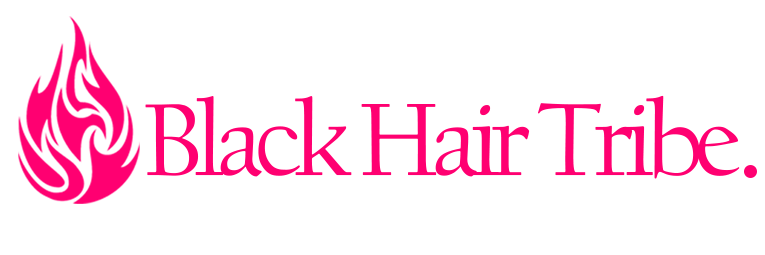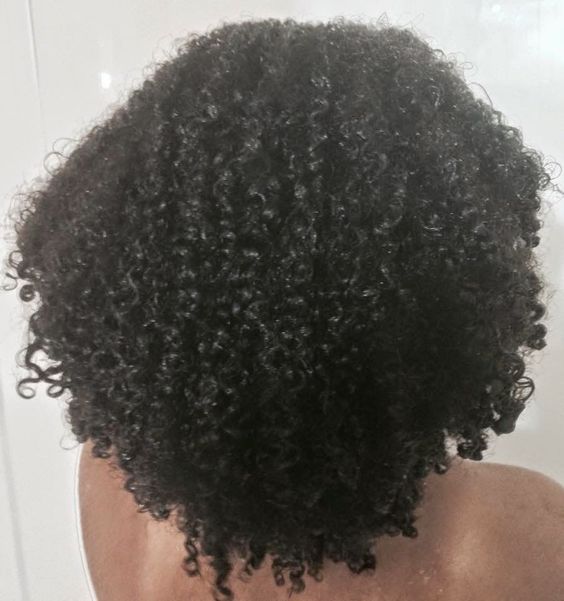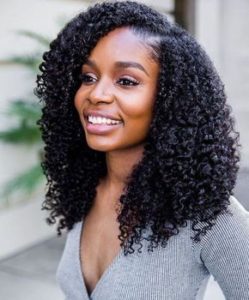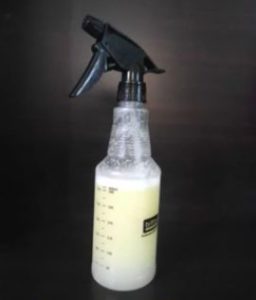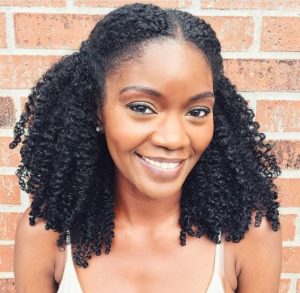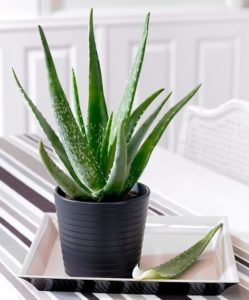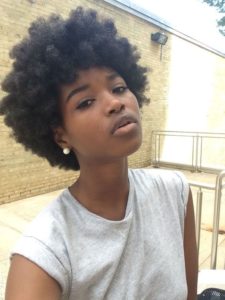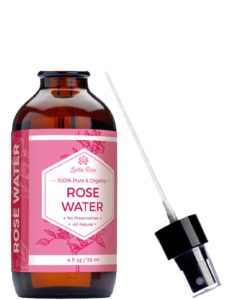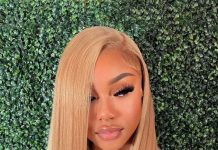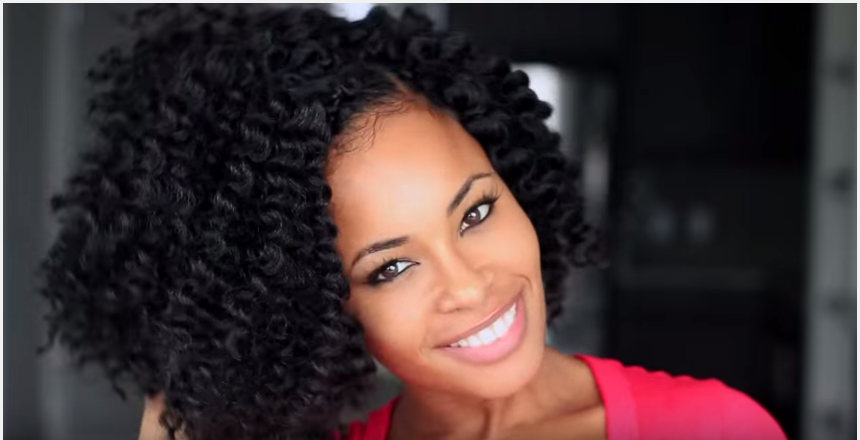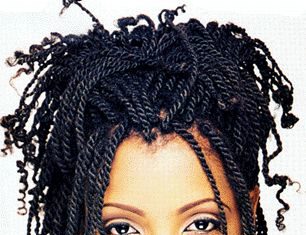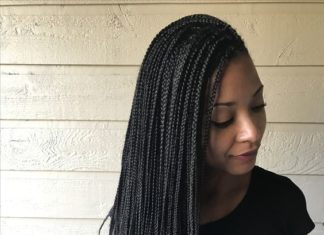Natural Hair Moisturizer Guide
Keeping natural hair moisturized is often easier said than done, but it’s an essential part of maintaining healthy hair. You might be wondering: why is natural hair so prone to dryness? Well, our scalps produce an oil known as sebum, which lubricates the hair as it travels down the length of the strands. But the shape of curly strands prevents the sebum from coating the entire length of the hair. This just means it requires a little extra effort to keep naturally curly/kinky hair moisturized. Every head of hair is different, so exact products and routines will vary from person to person. Here’s how to moisturize natural hair.
Best Ways to Moisturize Natural Hair
1Start With A Clean Slate
Clean hair will accept and retain moisture better. Cleanse your hair as often as needed to keep it free from build-up. For some people that’s once a week and for others it’s every few days: do what works best for you. If you wash your hair more frequently than once a week, try to stick with a moisturizing, sulfate-free shampoo. Co-washing with a cleansing conditioner is another great option; just make sure you don’t rely on co-washing alone. You should clarify your hair once or twice a month (or as needed) to get rid of any build-up co-washing may leave behind. If your hair feels dry right after washing and conditioning or if you find that products that you normally use no longer work the way they used to, that’s a sign that it’s time to clarify.
2Use A Good Conditioner
After cleansing your hair, always follow up with a rinse out conditioner. This is an optional step if you co-wash; you may find that following up with a leave-in is all you need. A rinse out conditioner will provide slip for detangling and help your comb and/or fingers glide through your hair with ease; even many cheap conditioners will get the job done. However, you may want to be wary of conditioners that contain silicones. They will make detangling easy and help smooth your hair, but silicones can build up on your hair with repeated usage. Avoid them completely, use them sparingly, or use a chelating shampoo every now and then to get rid of any build-up. Certain rinse out conditioners can double as a leave-in. Simply leave some conditioner in your hair as you do your final rinse. If you use a regular rinse out conditioner, follow up with your favorite leave-in conditioner/Moisturizer.
3Moisturize As Often As Needed
There’s more to moisturizing natural hair than just using the right products. It will likely take some trial and error to find the best routine and figure out how frequently you need to moisturize your hair. Keeping a hair journal is a great way to keep track of how your hair feels each day, which can help you determine how often you need to moisturize. Some people find that they need to moisturize every day, while others find every few days to be sufficient. If you need to moisturize daily, a lightweight moisturizer made with natural ingredients is a great choice. Natural hair absorbs lightweight moisturizerers easily and they don’t build up on the hair as quickly.
4Best Daily Moisturizer For Natural Hair
Every head of hair is different and there is no product that works for everyone. However, there are several products that work for many. The TGIN Butter Cream Daily Moisturizer is a popular product that works on a variety of different hair types. The formula is rich and hydrating enough for coarse hair but not too heavy for fine strands, making it ideal for daily use. With moisturizing ingredients like olive oil, aloe vera juice, and shea butter, you may find that you don’t need to use it every day, but it’s always nice to have the option. The Alikay Naturals Shea Yogurt Hair Moisturizer is another great moisturizer for natural hair. Formulated with ingredients such as shea butter and coconut oil, a little goes a long way. This product can also double as a styler, which is a plus. For the best results, be sure to lightly spritz your hair with water before applying. If you prefer a more lightweight daily moisturizer, the Jane Carter Solution Revitalizing Leave-In Conditioner is a great choice. Just spritz it on your hair any time: day or night. Your hair will absorb it easily and it won’t build up even with daily usage. It works great as both a detangler and a daily refresher.
5DIY Moisturizer For Natural Hair
As an alternative, you can easily make your own moisturizer at home. Start with the ultimate moisturizer – water – and mix it with other moisturizing ingredients. To make your own DIY moisturizer, mix water with aloe vera juice, then add a little olive oil and/or jojoba oil. Combine the ingredients in a spray bottle and shake before spritzing onto your hair. Another great recipe involves mixing rose water with a small amount of vegetable glycerin and your favorite oil. It’s important to note that glycerin is a humectant, which means it pulls moisture from the air into your hair. Glycerin works best when there is a moderate amount of humidity in the air. However, if you live in an extreme climate, glycerin can either pull too much moisture into your hair, making it frizzy, or do the opposite and strip moisture from your hair.
6Seal After Moisturizing
To improve moisture retention, you can try sealing your hair with an oil or butter. To do this, simply apply the moisturizer to your hair as you normally would (from roots to ends), then follow up with a small amount of oil and/or a butter. The idea behind this concept is that the oil and/or butter will act as a barrier, “sealing” the moisture inside. The LOC (Liquid, Oil, Cream) and LCO (Liquid, Cream, Oil) methods are popular sealing techniques, particularly for those with highly porous hair. You can try both methods and see which one (if any) works best. You can also skip the C step completely, and just seal with an oil if you are worried about your hair being weighed down. If you need a thicker sealant, you can skip the oil and apply a cream right after moisturizing. Popular oils include olive oil, jojoba oil, and argan oil and popular butters include shea butter, mango butter, and most products that are marketed as hair butters or creams. If your hair’s porosity is low or normal, you may not find it necessary to seal all.
7Styling Products
Using moisturizing styling products is another great way to combat dryness. Most styling products contain moisturizing ingredients, but not all are created equal. Some contain drying ingredients like alcohol (not alcohols are bad for your hair, only certain ones). Luckily, there are many great products that provide great hold and nourish your hair at the same time. If you’re having a hard time finding a high-quality styling product that provides enough hold, you can go the natural route and use aloe vera gel or flax seed gel. They are both great, all-natural alternatives to commercial styling gels.
8Ingredients Matter
Pay attention to the ingredient lists on every product you use. Certain ingredients, like sulfates, mineral oil, and petrolatum, can be harmful to your hair. It’s always a good idea to keep track of the ingredients of every product you use – especially the ones that don’t work for you. There could be one or more ingredients that don’t play well with your hair, and identifying and avoiding those ingredients can save you time and money. As previously mentioned, certain rinse out conditioners can double as a leave-in; however, not all can be used this way, the ones that can usually state it on the label. Certain formulas shouldn’t be left on your hair longer than the recommended amount of time. This largely depends on the ingredients in each rinse out conditioner.
9Give Your Hair Some Extra TLC When Needed
If your hair is color-treated and/or damaged, it’s a good idea to give it some extra TLC. One way to do this is by deep conditioning your hair weekly. Everyone should use a deep conditioner every now and then, but unless your hair is damaged, you don’t have to use it every week. For the best results, use heat with your deep conditioner. Cover your hair with a plastic cap and sit under a hooded or bonnet dryer for the recommended amount of time before rinsing the deep conditioner from your hair. As an alternative, you can use a self-heating cap that uses your own body heat to warm up the conditioner. Hot oil treatments are another great way to give your hair some extra moisture.
10How To Moisturize Natural Hair – Conclusion
Building a customized hair care routine is essential if you want to maintain healthy, moisturized hair. Don’t be afraid to adjust your routine overtime as needed by introducing new products and/or eliminating old ones that no longer get the job done. While everyone’s routine will look a little different, cleansing and conditioning regularly is at the heart of every regimen. When your hair is moisturized, it will look and feel better. Luckily, there are many products and techniques out there, so you’re bound to find something that works for you.
